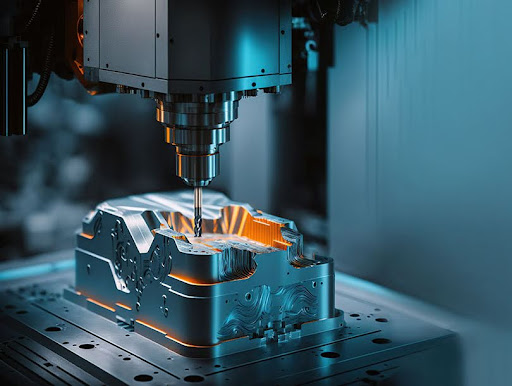To sign up for our daily email newsletter, CLICK HERE
In the past few years, China has become a leading global manufacturer of rapid prototypes and assembly manufacturing. The move has been stimulated by new technology, an experienced workforce, and the stable industrial base that the country has. 3ERP is among the companies in the minority but forms the front line of the revolution. It has a well-known rapid prototyping workshop in China. In this article, I will discuss the trend of rapid prototyping, related methods, and its impact on current manufacturing.
What is Rapid Prototyping?
Rapid prototyping is a set of methods used for rapidly creating a scale model of a physical part or assembly by the application of three-dimensional computer-aided design (CAD) data.
New companies no longer rely on the development process. They can now make prototypes faster and cheaper than ever before by using rapid prototyping. It was a turning point in the product development process, as it allowed companies to run faster and cheaper prototypes than ever before.
Key Benefits of Rapid Prototyping
- Shorter product development schedules
- Less cost in the conceptual stage with purified design solutions
- More guaranteed product functionality
- The better relationship between designers as well as other stakeholders
- The possibility of multiple design iterations quick testing
Common Rapid Prototyping Techniques
CNC Machining
It utilizes subtractive manufacturing to generate objects from specified solid material pieces. CNC (Computer Numerical Control) machining involves computerized controls and cutting devices to cut material from a solid block and obtain a required part. It is extremely accurate, and materials can be of all kinds, varying from metals, and plastics, to composites.
3D Printing
3D printing or additive manufacturing is a process of creating objects layer-by-layer. It is mostly used to create hard-to-produce, intricate parts that are basically not otherwise producible without the help of the technologies. Common 3D printing methods are Fused Deposition Modeling (FDM), Stereolithography (SLA), and Selective Laser Sintering (SLS).
Vacuum Casting
Vacuum casting is a resin process to make plastic prototype parts. It is a technology that involves creating a silicone mold from a master pattern and then using this mold to cast multiple copies of the part. It is a technology that gives the ability to produce very detailed small-run parts with a smooth surface. It is also a good opportunity for the tooling process not to be a bottleneck but to the contrary, an enabler of innovation.
Injection Molding
Although the horse does not lead the pack in rapid prototyping, the technique is used for prototyping when a quick turn-around is required. The most basic way to use it is by adding molten material to the mold cavity, and then allowing it to cool and harden in its shape. This process is highly productive for mass production of plastic parts.

The Impact of Rapid Prototyping on Product Development
Accelerated Time-to-Market
Rapid prototyping significantly shortens the time for the product to move from prototype to market. Companies may quickly and efficiently build physical prototypes to test new designs and rapidly modify these designs, something not possible before.
Cost Reduction
Although the up-front investment in rapid prototyping technology may be substantial, the long-term savings can be significant. By pinpointing and resolving design challenges early on in the development process, companies can avoid costly changes at the final stages of the project.
Enhanced Product Quality
Rapid prototyping design not only allows us to do more testing but also provides additional learning opportunities for refinement before production. This results in better product quality that is both practical and appealing to customers.
Improved Collaboration
Physical prototypes offer a new way of communicating with designers, engineers, marketers, and other stakeholders. These parts could act as focal points of discussions and decision making during the whole process of design and production.
Rapid Prototyping in Different Industries
Automotive
The car industry applies rapid prototyping to produce everything, from new car parts to creating scale models of the whole car. They are also used for testing the car regarding aerodynamics, ergonomics, and looks before building expensive tooling.
Aerospace
Prototyping in the aviation and space sector is mainly used when a very accurate one is needed. This technique is mostly used to cut production time as well as reduce waste by producing lightweight parts crucial in the improvement of fuel efficiency and the overall performance of an airplane or satellite.
Medical
Rapid prototyping, originally set for the manufacturing industry, has now been introduced into the medical field, giving medical aid like orthodontists the possibility of crafting custom, patient-matched prostheses and exact dental implants]. The application of 3D printing in medicine has gone further, where these guides are used for surgery and are also being tried to print body parts. Prototyping in every field is an important element to undeveloped projects or rather develop projects more effectively.
Consumer Products
From electronics to household items, the technique of rapid prototyping has been a continuous benefit to companies in various ways by allowing them to come up with new and improved products that are innovative.
Conclusion
Rapid prototyping has come to play an important role in the new product development procedures of modern times. Thus, the need for physical models to be produced in a quick and accurate manner has become the catalyst of new innovation techniques. Rapid prototyping will likely be of utmost importance as technology moves forward in the manufacturing and product design sectors.
Rapid prototyping in China, where companies such as 3ERP are among the first and best to introduce these new paradigms in various industries. The industry’s overall expansion, particularly in China’s interactions with the global knowledge society, will allow China to exploit those advantages to become a leading country in that field.